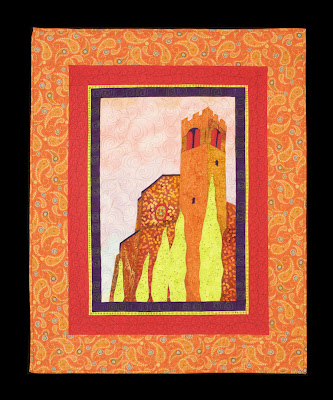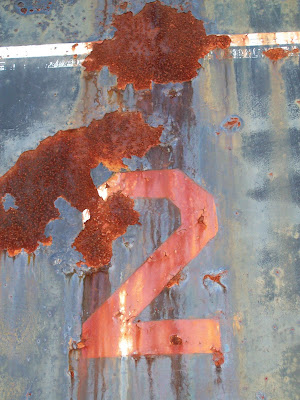
Toscana
Where do artists find the inspiration for their work? For me, the answer is often in my travels. Journey is one of the recurring themes of my art. Almost two years ago I had the extreme good fortune to spend two weeks in Tuscany and Rome. My best friend Anne and I travel together and we decided that what with the sunshine, art, food, wine and Italian men, we couldn’t go wrong with Tuscany. We usually prefer do it yourself travel, but couldn’t decide on the best way to approach this trip. We considered driving, but since she is British and we were contemplating driving in a country that drives on the right side of the road, the driving would fall to me. Normally this is no problem, I love driving, but frankly I had heard some horror stories about the high rate of speed that is preferred by Italian drivers. Let’s face it, I chickened out so we booked a coach trip that took care of the transportation and hotels.

Giambologna’s Rape of the Sabine Women, Piazza della Signoria, Florence
We arrived in Pisa and took our places on the tour bus. Very quickly we were in the luscious Tuscan countryside and listening to Puccini and Andrea Bocelli as the vineyards and olive orchards whizzed past. Soon we were transported to the birthplace of Renaissance art, Florence. We quickly dumped our gear in the hotel and walked a short way to be greeted by views of the Duomo. We gorged on gelato which is really homemade ice cream with the most spectacular flavors like tangerine ( I always thought it was sherbet); the presentation of this confection is a work of art in itself. Then we imbibed in what we later calculated to be a ten dollar cup of coffee in the Piazza della Signoria. It was worth every dime to sit in this spectacular place and soak up the art, culture and architecture.

Boboli Gardens – Pitti Palace, Florence
Florence is the kind of place where you can collect views of world famous art like charms on a bracelet. The next day we were blessed with a coveted ticket to the Uffizi Gallery. A fantastic opportunity to view so the famous works studied in Art History 101. Botticelli.. check..DaVinci.. check.. Donatello ..check. Well, you get the idea. One needs a break to get perspective and truly appreciate the experience. Always willing to indulge my quirky interests of the moment, Anne was easily persuaded to visit Boboli Gardens. We strolled and smelled the abundantly blooming wisteria and the first pale yellow roses of the season as we caught a view of the Duomo from afar.

Ponte Vecchio, Florence
Like any textile artist worth their sewing machine, about now I was desperately in need of a fabric fix. Luckily, I had done my homework and we trundled over to Casa Dei Tessvti on the Via de’Pecori, in search of some silk. After all, Florentines had made it rich on the silk trade back in the day, and this must be the place to get a great deal. We walked in the front door and I knew I wasn’t in Kansas anymore, Dorothy. I had been transported back a hundred years. The fabric rolls were neatly stacked clear up to the ceiling, requiring the use of a rolling library ladder to reach them, and all the cutting tables and casework were deeply grained and patina’d wood. We were greeted by a dapper septa or octogenarian dressed in a cream linen suit and bow tie. Within a few seconds, and without me even asking, he unrolled a stunning, embroidered, cinnamon colored silk, stating, “It matches madame’s hair,” and you betcha it did. I was drooling. I had learned some basic Italian for this trip like, where is the ladies bathroom and how much does this cost? I was nearly knocked to the floor when he said 250 Euros a meter. Still hopeful that I could own a small piece of this textile work of art, and thinking of American fabric shops, I asked if I could purchase a quarter meter. Now it was his turn to be knocked out of breath, “No, madam, a full meter is the minimum amount that can be purchased.”

Brunelleschi’s Dome – The Duomo, Florence
He then inquired how he might be of service. I told him that I was a quilter from America. Ahhhh.. yes he knew of quilting and thought perhaps some cottons would be useful. Ah, yes, cottons. Slightly disappointed, at least I wouldn’t go home empty-handed. With a flourish, he pulled out some cotton shirtings , a mere 45 Euros for some striped material of no particular interest. “Could I just look around?” After a thorough search of the store I ferreted out five bolts of fabric that looked like silk. Amazing colors, and at last, only 18 Euros a meter, this I could afford. Now I knew this could not be silk at the labeled price and I was darned if I was going to pay that amount for polyester, so I asked. I thought the poor man was going to stroke out before my eyes, and I never could remember all those steps in CPR. He assured me that his shop would never carry polyester and that these were Viscous. I checked my internal catalog for the composition of Viscose, but could not remember what it was made of and I did not want to actually kill this dapper Florentine with another stupid question, so magnanimously I said, “I’ll take all of them.” The first smile appeared of the morning and he carefully cut and wrapped each piece in tissue and placed them all in a lovely cloth bag with their logo. He toted up the bill by hand, licking his pencil, and was somewhat stunned when I presented a credit card and he had to use the machine. He did tell me that the shop services clothing designers and is teaching a brand new group of young students how to sew couture clothing. I was impressed and I will never forget this textile adventure. Check out future blogs to see how I used this treasured fabric.
 IM Pei’s Addition to the Louvre
IM Pei’s Addition to the Louvre


















